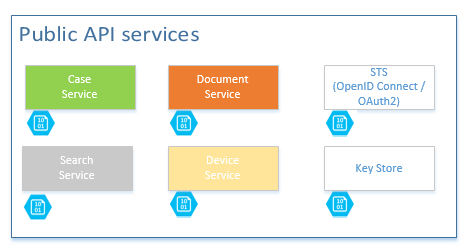Getting Started with Clearance API
This page will help you get started with Clearance. You'll be up and running soon!
Overview
Clearance is a platform to securely manage evidence and organize it into cases. Before reading this API documentation, we strongly recommended you look at our tutorial videos.
Additionally, we recommend you request a demo account so you can test the APIs with it.
Clearance is a multi-tenant cloud service deployed in several Datacenters such as USA, US-Gov, Europe, Canada, Australia. Each data-center instance is stand-alone, entirely independent from the other instances.
When working with the API, the API endpoints will not have a fixed URL for all the tenants, but will be different based on their Datacenter. The list of endpoints is provided in the JSON Connection File when creating a service account on a Clearance tenant.
The customer account (Clearance Tenant) is provisioned in one of the Clearance datacenters based on the location of the customer. Ex: if a customer account is in Europe, the servers managing that customer's data will be in one of the European datacenters.
Clearance’s back-end is composed of several micro-services that each implement a portion of Clearance. Consequently, the number of API endpoints depends on the type of services your are accessing.
Here's an overview of the different API endpoints that are available.

In the documentation, you can see examples where the base URL of the different services is hidden by a variable name. This is to remind you that you should not hardcode any base URL in your code because the URL will differ based on the Clearance Datacenter in which your account is located.
Developer accounts are always created in the US datacenters but the real production account might be in a different datacenter with a different set of URLs.
When you have a Clearance Account, you can create a service user on the account and download the JSON Connection File that contains the list of all the URL endpoints required to communicate with the platform.
Updated about 4 years ago

